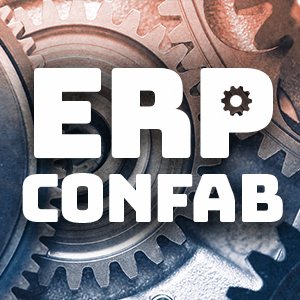SAP cloud migration a long haul for implementation partners

The CEO of an ERP consultancy and SAP partner explains the benefits, challenges and tradeoffs of moving to SaaS, and why the on-demand subscription model is a double-edged sword.
SAP cloud migration has challenged SAP and its tens of thousands of customers. The ERP market leader, like all vendors with long histories in on-premises ERP, has struggled to move its product line to the cloud and entice customers to move with it.
Today it has a large portfolio of cloud applications and deployment options that are both hugely attractive and scary to companies entrenched in old, familiar ways of doing business.
Make no mistake. SAP now gets a third of its revenue from the cloud, and growth is steady every quarter. The cloud is gradually replacing the on-premises model.
But undeniable progress at the macro level means little to companies that are unsure whether to move their complex business processes to unfamiliar territory. They typically need an SAP implementation partner to hold their hands through the entire journey.
Partners have always played an important role in getting SAP products sold and implemented, but this year they share center stage with SAP itself, thanks in large part to Rise with SAP. Introduced in January, it's the latest SAP cloud migration service, one that explicitly relies on the SAP partner network to turn the cloud's promise into reality.
In this podcast, Hanif Sarangi, president and CEO of Phoenix Business Consulting, an SAP partner, shares his experiences with SAP cloud migration. The company is based in Sarasota, Fla. and provides implementation, training, support and system review for SAP ERP products.
S/4HANA Cloud or on-premises S/4HANA?
Despite years of glitzy marketing from SAP, it's clear that S/4HANA Cloud, the multi-tenant SaaS version of S/4HANA, is not as full-featured as the on-premises version.
What do customers give up by moving from an older on-premises SAP ERP -- typically, ECC -- to S/4HANA Cloud?
 Hanif Sarangi
Hanif Sarangi
"With on-premise versions of SAP software, they're very customizable. I can do virtually anything with an on-premise system," Sarangi said. "Now my cloud customers have to be willing to accept the best practice scenarios that are available in the system. If they're going from an on-premise to a cloud system, they're going to lose some functionality sometimes."
SaaS ERP also comes with quarterly patches that can clash with tailored systems. "If your system is too customized, the testing involved in making that system work is going to be extensive," he said.
SAP is fond of saying that the several flavors of S/4HANA have the same code base, which can make it sound like the differences are minimal. But it doesn't mean they all work the same. It depends on which features have been activated, according to Sarangi. "On-premise versions of S/4HANA do have more capability," he said.
He recounted one small business's decision to forego S/4HANA Cloud because of the specialized needs of its niche, which it handled with a custom-developed ERP built up over 25 years.
"I tried to sell them the standard SaaS functionality, because they're of the size where SaaS makes sense," Sarangi said. But after he looked closely at the company's business processes, it became clear that they couldn't be fit into SaaS ERP.
"They ended up having to buy an on-premise system and have it customized," he said -- the on-premises S/4HANA hosted on Amazon Web Services.
In contrast, an insurance customer illustrates the time and cost savings of multi-tenant SaaS. Sarangi said that in the past, implementing on-premises ERP for an insurance company would have cost at least $10-15 million and taken a year or two. But this customer is willing to accept the standard business processes of SaaS ERP and is paying $1-2 million to implement it in six months.
"It's mind-blowing for me, having worked in the business for 30 years and seeing the pricing of implementation," Sarangi said. "They have millions of transactions flowing through the system, they have complicated business processes, lock boxes and integration -- all of that -- and I'm doing it for somewhere between a million and two million dollars, which is amazing."
SAP cloud migration has downside for SAP partners
Sarangi was forthcoming about the financial challenges of moving to the cloud with SAP and its customers.
The main issue is what's sometimes called the SaaS revenue trough, in which revenue from the typically upfront licenses for on-premises products declines faster than SaaS subscription revenue can replace it. The financial strain on SAP and similarly positioned ERP vendors extends to their implementation partners.
Sarangi's SaaS difficulties began when he continued responding to requests for proposals with on-premises ERP just as SaaS ERP was taking off.
"The SaaS companies were coming in and doing it at a fraction of my cost," he said. "Even though I was demoing well, they loved the product and we were meeting all of the requirements, just on a purely cost factor, we were losing."
Phoenix eventually made selling SaaS the priority, but the numbers remained challenging. Before, Sarangi might put 50 people on site for two years and bill for $20 million. "Now I'm selling a $200,000 project … but my sales costs haven't come down," he said. "What I have now is people working at home working on multiple SaaS projects at the same time."
And now it's become a price war.
Phoenix revenue was down in the past two years while costs have gone up because more staff is needed for each of SAP's many cloud products, according to Sarangi. He is banking on rising SaaS subscription revenue eventually offsetting the loss.
Also discussed in the podcast:
- why SAP's other SaaS ERP product, Business ByDesign, is often the best choice for SMBs;
- the role of SAP Cloud Platform in extending S/4HANA -- both cloud and on-premises versions;
- SAP's progress in integrating its acquired cloud products, including Ariba and Concur, with each other and with S/4HANA; and
- why starting with S/4HANA Finance is a typical entry point to adopting other S/4HANA modules.
To hear it, click on the podcast link above.